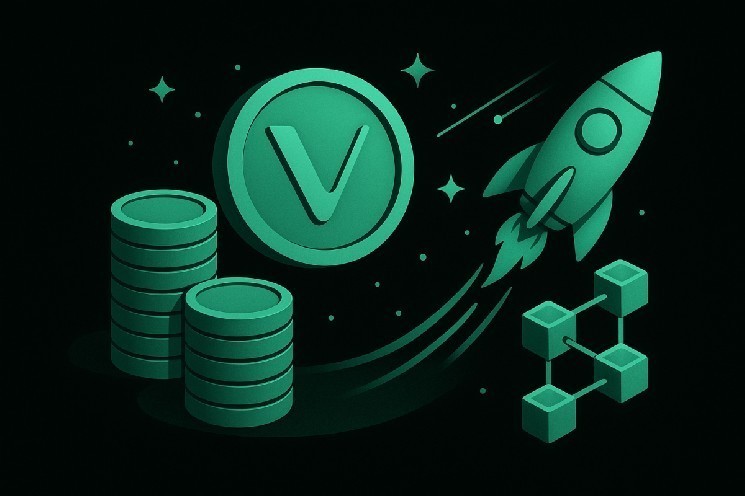Listen to the article
- VeChain has prioritized environmental sustainability, carbon footprint tracking, and responding to regulatory demands.
- Analysts may describe VET as “undervalued” because its price may not yet accurately reflect the scale of its real-world adoption.
BeLaunch, a decentralized launchpad, noted in a recent X post: “VeChain is a Layer-1 powering supply chain transparency, product authenticity, and ESG tracking, used by BMW, PwC, Walmart China, Bayer, and even the UN.” The team went on to ask a question many in the crypto community have been echoing lately: “Is VeChain (VET) the most undervalued real-world blockchain?”
VeChain has made significant progress since its launch, and as the blockchain’s regulation matures, its real-world use cases are expected to drive value. But VeChain’s market cap remains relatively modest compared to other top-50 crypto assets that have less adoption and weaker fundamentals.
Currently, VET trades around $0.01747, down approximately 3.74% over the past week. However, its trading volume has increased by 21% to roughly $39 million, with a market capitalization of $1.49 billion. Analysts note that a move toward $0.03875 could set the stage for a push to $0.05, particularly as adoption continues to build.
Vechain’s Bullish Cases
Vechain’s 2025 roadmap, VeChain Renaissance, is a multi-stage protocol upgrade for the VeChainThor blockchain. Galactica is the foundation phase, which introduced a dynamic fee market, where transaction fees automatically adjust based on network demand, along with the burning of 100% of base fees.
This improves EVM compatibility by adopting features from Ethereum’s Shanghai upgrade, allowing developers to more easily integrate existing tools and decentralized applications (dApps) into the VeChainThor ecosystem.
The second phase of VeChain’s roadmap, known as Hayabusa, moves from a passive reward model, where simply holding VET generates VTHO, to a more active participation system involving staking, validators, and delegators. This phase also introduced StarGate, a low-barrier staking platform that officially launched on July 1.
Through StarGate, users can stake VET and receive staking NFTs that represent their commitment within the network, allowing for flexible participation and delegation. The Hayabusa mainnet launch is targeted for December 2025, setting the stage for VeChain’s final phase, Intergalactic, which will focus on enhancing interoperability.
Apart from the network upgrades, VeBetter transforms everyday behaviors into tokenized on-chain events. It currently features two flagship apps, Mugshot, which encourages users to reduce single-use coffee cup waste, and GreenCart, which rewards environmentally conscious and healthy shopping habits.
Another initiative, Build Your Body (BYB), developed in collaboration with UFC, is a “workout-to-earn” fitness app that debuted during UFC 317, reaching millions of users. Moreover, the release of VeBetter Whitepaper 2.0 in September marked VeChain’s shift toward integrating artificial intelligence (AI) to enhance its ecosystem.
As mentioned in our previous report, its native token, B3TR, has also gained regulatory recognition, being officially listed in the European Securities and Markets Authority (ESMA) crypto register under the EU’s Markets in Crypto-Assets Regulation (MiCAR) framework.
VeWorld was first launched as a web wallet in early 2023 and has since evolved into an all-in-one wallet and entry point. VeChain recently rolled out the latest update (v2.4.6), introducing improvements designed to enhance user experience. The update includes a complete redesign of the Balance Card and Token Cards for greater clarity, consistency, and usability.
Thanks to these developments, a 2025 academic paper on blockchain-based ESG reporting in U.S. financial markets praised VeChain’s Proof of Authority (PoA) model as a strong, real-world example of how blockchain can advance sustainability in the finance sector.
In addition, a peer-reviewed study highlighted VeChain’s role in strengthening healthcare system resilience during the COVID-19 pandemic, recognizing it as one of the key blockchain platforms that delivered meaningful impact in real-world applications.



